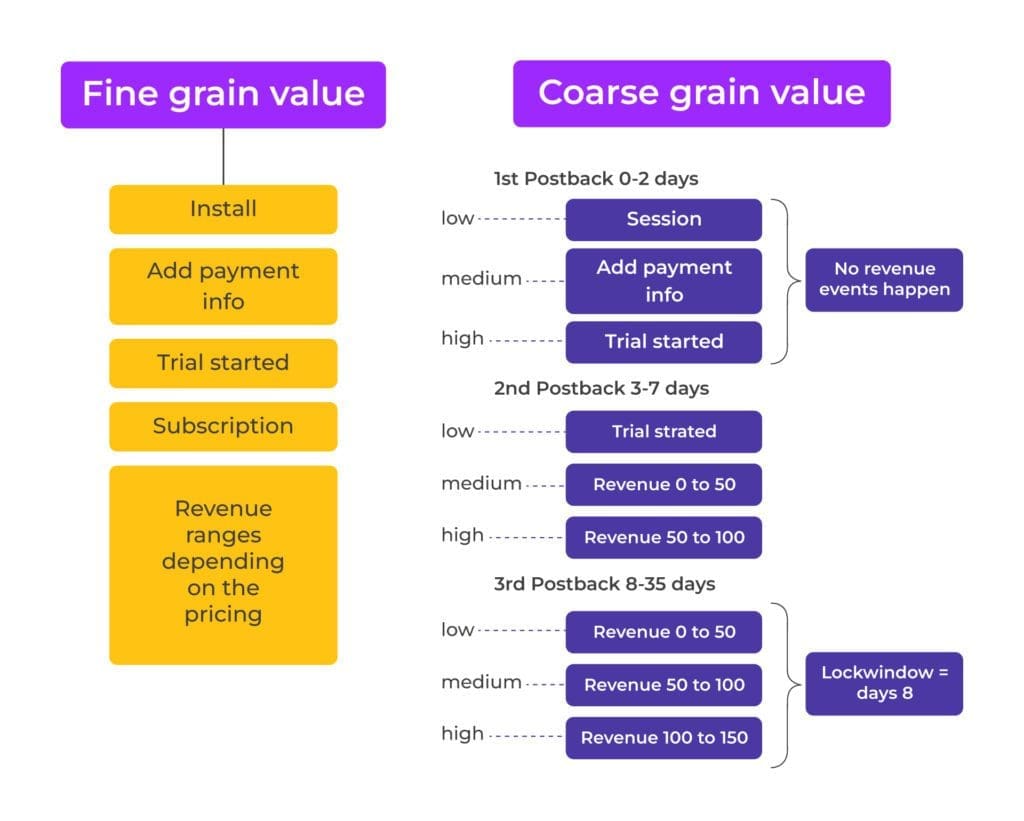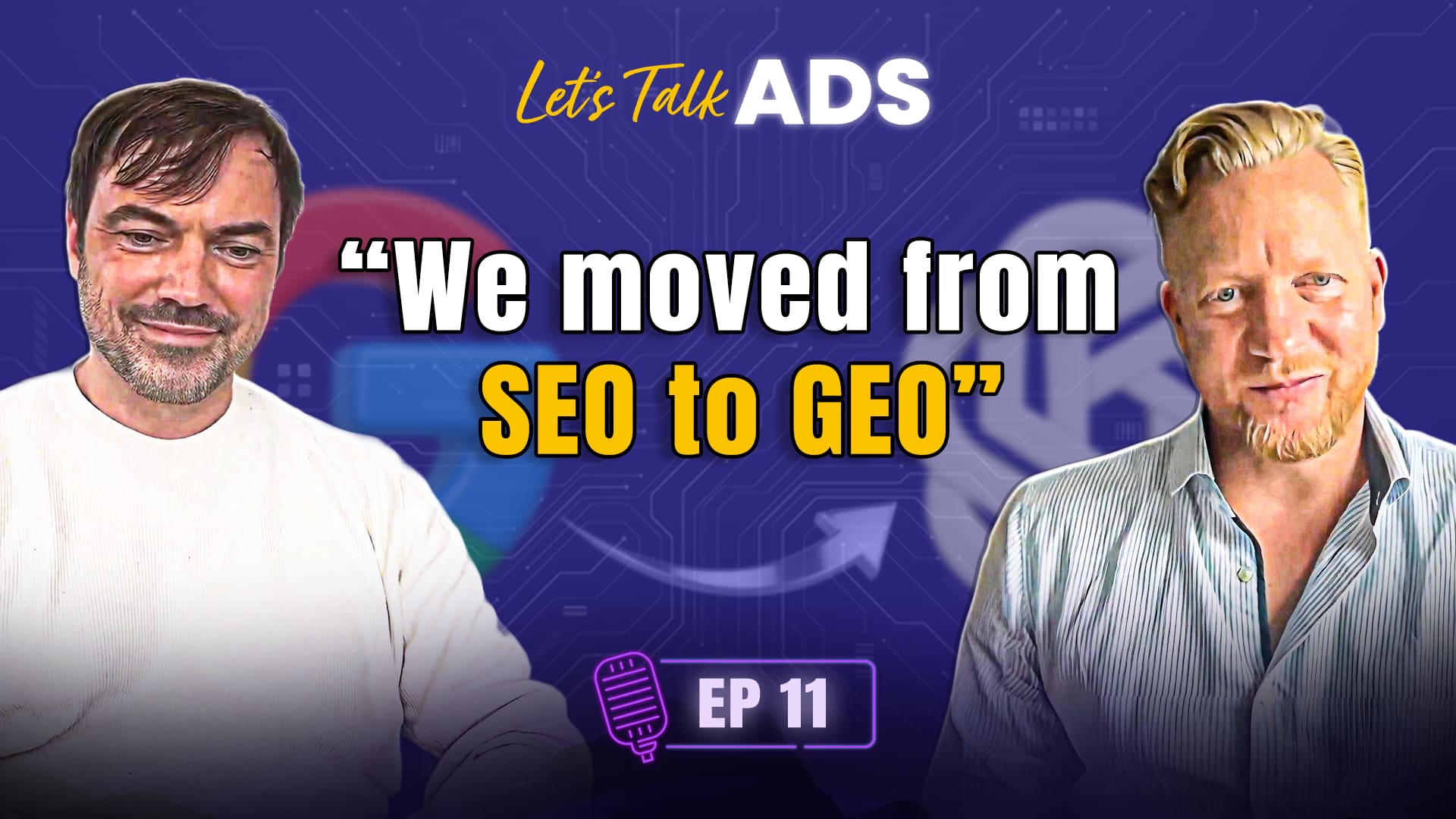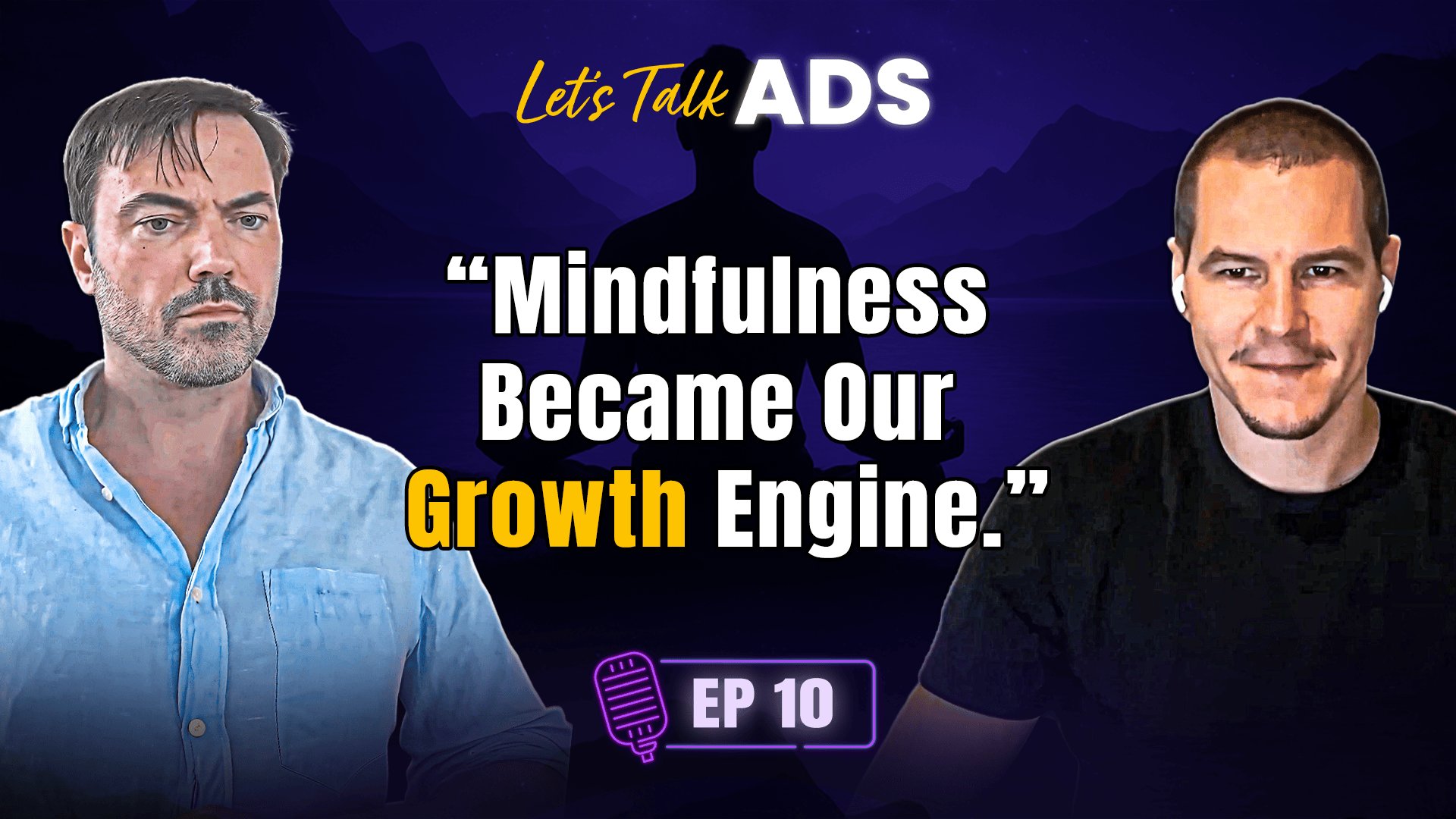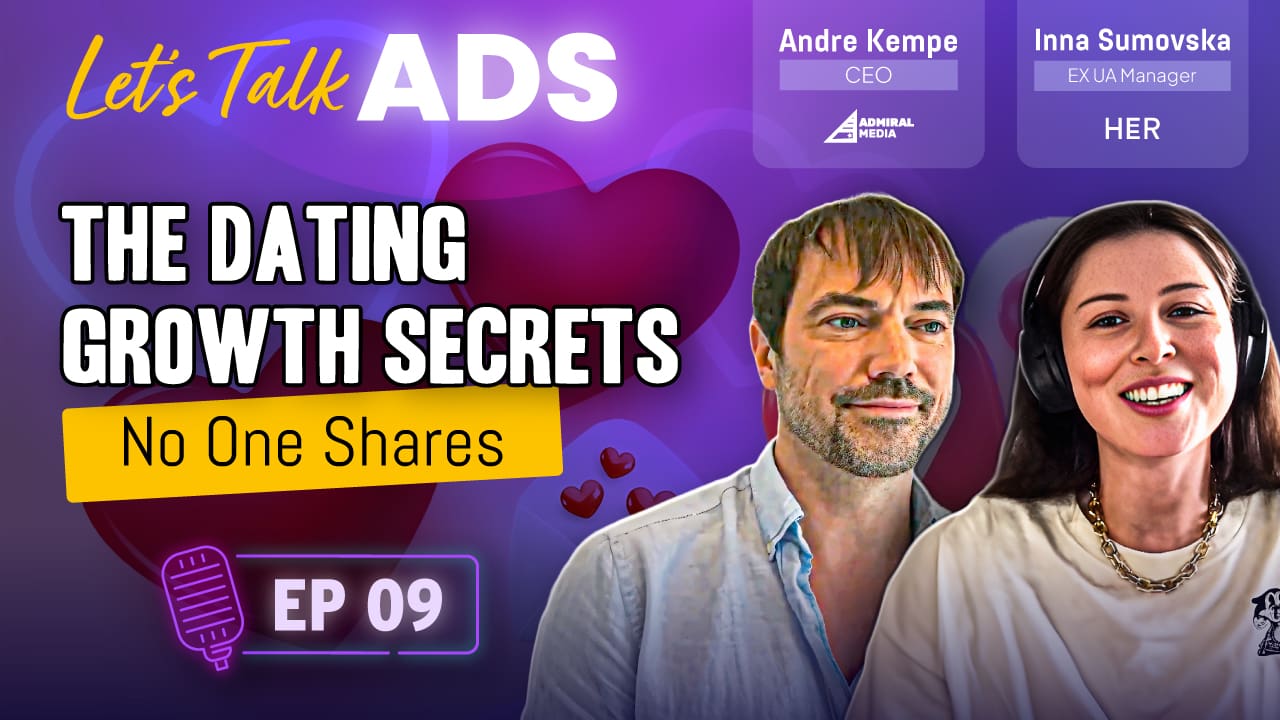SKAN 4.0 Interview with Pablo Pérez González Performance Marketing Director, at Admiral Media
Table of Contents
What can app marketers gain from SKAN 4.0 compared to its predecessors?
Compared to the previous SKAN 3.0 there are a few major changes in SKAN 4.0 and a couple of smaller ones. The most important changes for marketers:
- More campaign information can be passed on from ad networks. With the new hierarchical source ID consisting of 4 digits (vs the previous 2 digits), a lot more information can be passed on from the ad network. Such as location, placement, and creatives. Depending on how each channel sets them up.
- More postbacks and longer time windows for in-app events. We are moving from a single postback from 0-72 hours, using a 24-hour timer, to a new setup that will send 3 postbacks with different time frames.
- Crowd anonymity: Apple introduces new tiers of granularity, for both source ID and postbacks. Reducing the dreaded ‘null’ reports when the privacy threshold wasn’t met.
A little less crucial, but interesting still: Apple SKAN 4.0 enables tracking web-to-app conversions in the Safari browser. All of these changes point in the same direction – giving ad networks and advertisers more space to pass on the key bits of information they need, and allowing for more flexibility for their specific apps’ use case – vs. the rigid boundaries that were in place before (only one postback, strict timer, and the stricter privacy threshold).
Let’s start with the source ID
There is now a higher chance of obtaining more information with the new source identifier. What does this change mean for advertisers? What can they do using the 4-digit ID? This allows for more precise attribution of app installs and in-app events. This change means that advertisers can have more granular data to optimize their ad campaigns better. And improve return on ad spend (ROAS) by country, placement, or individual ads. Depending on how the ad networks implement it. Before, SKAN only allowed for 100 campaign IDs from 0-99. The first digit was reserved for internal use, which left 9 digits for the ad network. This meant that for example on Facebook, only 9 campaign IDs could be used. With the new 4-digit source ID, the first can be for internal use, second for the campaign, leaving 2 additional digits for what the ad network wants to report, e.g. country, demographics, or placement. Which for Meta could mean placements like feeds, stories, and reels within its Instagram, Facebook, or audience network. Google could choose to use them for ad set, or country. The 4-digit ID gives ad networks more space to implement it according to their and their advertisers’ needs. Currently, advertisers have to rely on modeled data provided by the ad network for more granular insights into campaign performance, such as creative or placement. Getting deterministic information will be incredibly valuable. However, the more granular data will only be available if a specific crowd anonymity threshold determined by Apple is reached. The source ID is hierarchical so that more general info like country or campaign will be available at high crowd anonymity.
Another major change is 3 postbacks instead of 1 per user
Can you explain what that means, and what is the best way to make use of them? With these new postbacks, we will be able to receive some app events that are happening in our user journey after the first 48 hours. Until now, we were completely blind. We will be able to identify how many users convert into paying users after a 7-day trial, or how many users renew their subscription after the first month of being acquired. The first postback ends on day 2 by default, the second 3-7 days, and the third from 8 to up to 35 days. This is especially useful for apps where the revenue event happens later than 48 hours after first app open, such as subscription apps with free trial. To get the most out of SKAN 4.0, you should definitely make use of all 3 postbacks. The best way is to identify which relevant events or revenue ranges are happening in a higher distribution during Cohorts D3-7 and Cohorts D8-35 and set up your postbacks 2 and 3 accordingly. Like the source IDs, the number of postbacks is subject to crowd anonymity as well – Apple uses coarse and fine values to reduce the number of ‘null postbacks’.
How do coarse values work?
You will be able to set up three different coarse values in each of the postbacks that will enable some information to be sent back even when high crowd anonymity is not reached. Fine values can go up and down for the first time. For example, a betting app’s revenue can go up and down. Until now, if you did not reach the privacy threshold, you would not receive any information regarding events and just get zero conversion data. With SKAN 4.0, there are 3 tiers, depending on crowd size. As the size of a user group grows, and the level of anonymity for each individual member increases. With each tier of crowd anonymity, there is an increase in granular data within the conversion postbacks sent by Apple to ad networks and advertisers. The highest level of crowd anonymity (Tier 3) provides the most detailed information.
Can you share some examples of a good postback setup?
It depends on the use case and target KPI. For example, for a health and fitness app, the first postback could be used for different events. Like session started, add payment, or trial started – events that are not revenue-related. Postback 2 could be used for trial-started, or first revenue events. Depending on the anonymity tier, postback 3 can be used for revenue events and cancellations after the free trial period. It’s also notable that Apple introduced a lock window with SKAN 4.0. So that advertisers can lock in a conversion earlier. After receiving a locked conversion value, the system immediately prepares the postback. And ignores any further conversion value updates in the same conversion window. So if an important conversion event happens at day 8 after a free 7-day trial, advertisers won’t have to wait the full 35 days to understand the conversions. However, as always in SKAN, locked-in postbacks are not sent immediately, but after a random timer. 
Example of how conversion values could look for a Health & Fitness – subscription app with 7-day free trial
How important are the new web-to-app conversions in SKAN 4.0?
Web-to-app SKAN conversions can be useful, however, it’s not a change that I expect to have a major impact. They are interesting for advertisers with a bigger presence on the web. Because it allows them to track user activity. That starts on the web and ends up in the app in Apple’s Safari browser.



